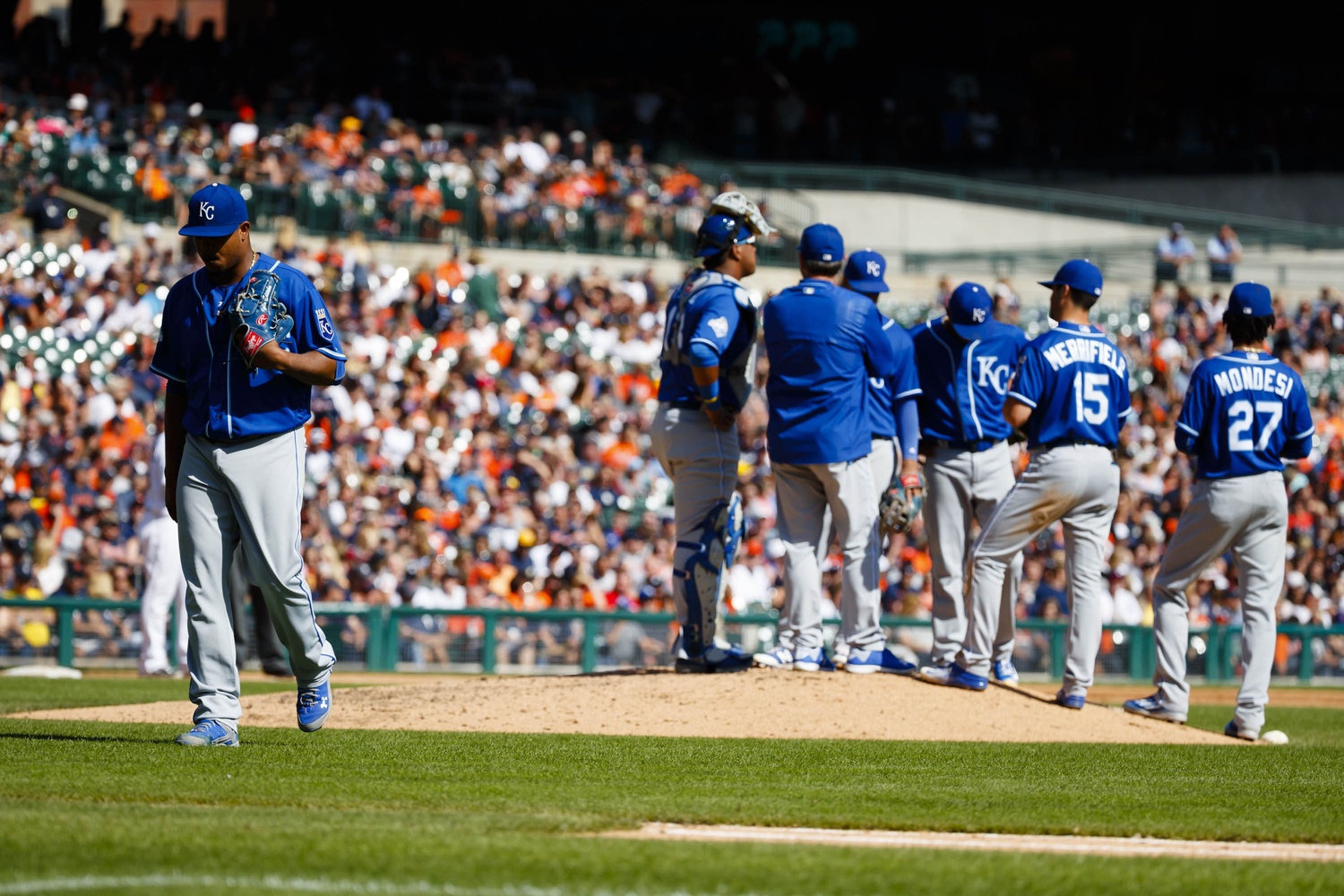What would you say was the biggest problem for the Royals’ pitching staff this year? If you said they gave up too many runs, you would be correct. Giving up runs is bad! However, compared to the rest of the league, the Royals were right around average, in terms of runs allowed. As Darin pointed out the other day, the offense didn’t take advantage of their scoring opportunities, which was probably the biggest factor in the season ending early.
At the same time, the pitchers could’ve been better. They allowed 206 home runs. Only five teams in the league allowed more. But two of those teams finished above the Royals in the standings, and allowed fewer runs. The dingers alone were not the death knell.
Home runs are always bad for a pitcher, but they are much worse with men on base. And this year, the Royals allowed more men on base. They walked a few more batters, which is never ideal, but they also allowed many opponents to reach in another frustrating fashion: ground-ball singles.
In 2015, Royals pitchers allowed a batting average of .241 on ground balls, according to Statcast. That was the fifth-best mark in the league. Unsurprisingly, they also allowed the fifth-lowest slugging percentage in the league, at .260.
This year, things didn’t go quite as well. Opposing ground balls resulted in a batting average of .270 (second-worst) and a slugging percentage of .290 (third-worst).
Breaking it down further, the Royals allowed 59 more hits on grounders this year, despite inducing just six more ground balls total. How many extra pitches were thrown due to a ground ball not being converted into an out? Probably a lot! I’d even go so far as to say a whole lot.
The reason for the increase is a combination of factors. The Royals allowed harder contact on ground balls, with an average exit velocity of 87.2 mph this year, compared to 86.1 mph last year. But last year’s mark wasn’t all that impressive, ranking eighth-lowest in the league. This wasn’t all on the pitchers’ shoulders.
The Royals have an excellent defensive team, but in 2016, they were not quite as excellent, particularly in the infield. Cheslor Cuthbert has a very strong arm, but he doesn’t have the sure hands or range of Mike Moustakas, so there was a downgrade. Alcides Escobar continued to make eye-popping plays, scattered in with some botched routine plays. Omar Infante’s arm appeared to be held to his body with thumbtacks, although the combination of Whit Merrifield and Raul Mondesi did eventually help stabilize the defense at the keystone. And while Eric Hosmer may win yet another Gold Glove, he seemed to have more misplays than in prior years.
It wasn’t that the infield was full of guys wearing frying pans on their hands (although I would absolutely watch that), but the infield defense took a step back. This was confirmed by the eyeballs of most people watching, as well as the numbers. These are the Fielding Runs Above Average (FRAA) totals for the four infield positions over the past two years.
| Position | 2015 | 2016 | Difference |
| 1B | 3.7 | -2.4 | -6.1 |
| 2B | -10.4 | -1.8 | 8.6 |
| 3B | 7.5 | -2.3 | -9.8 |
| SS | 7.2 | 1.1 | -6.1 |
Oddly enough, the defense at second has rated much better this season, and the numbers appear worse due to some poor ratings from Mondesi’s debut. You don’t necessarily need to buy in to every grain of detail to get the picture: Royals infielders didn’t defend as well as they had before.
Whether it was a middle infielder failing to turn a double play, or a pitcher giving up too many hard-hit worm-burners, or a chopper bouncing just over the first baseman’s glove, opponents collected more ground-ball base hits than the Royals wanted. While grounders don’t end up as dingers, extra hits lead to extra baserunners, and extra baserunners can lead to more runs. Extra baserunners did lead to more runs, and those runs have helped lead to the Royals watching baseball today instead of playing it.
